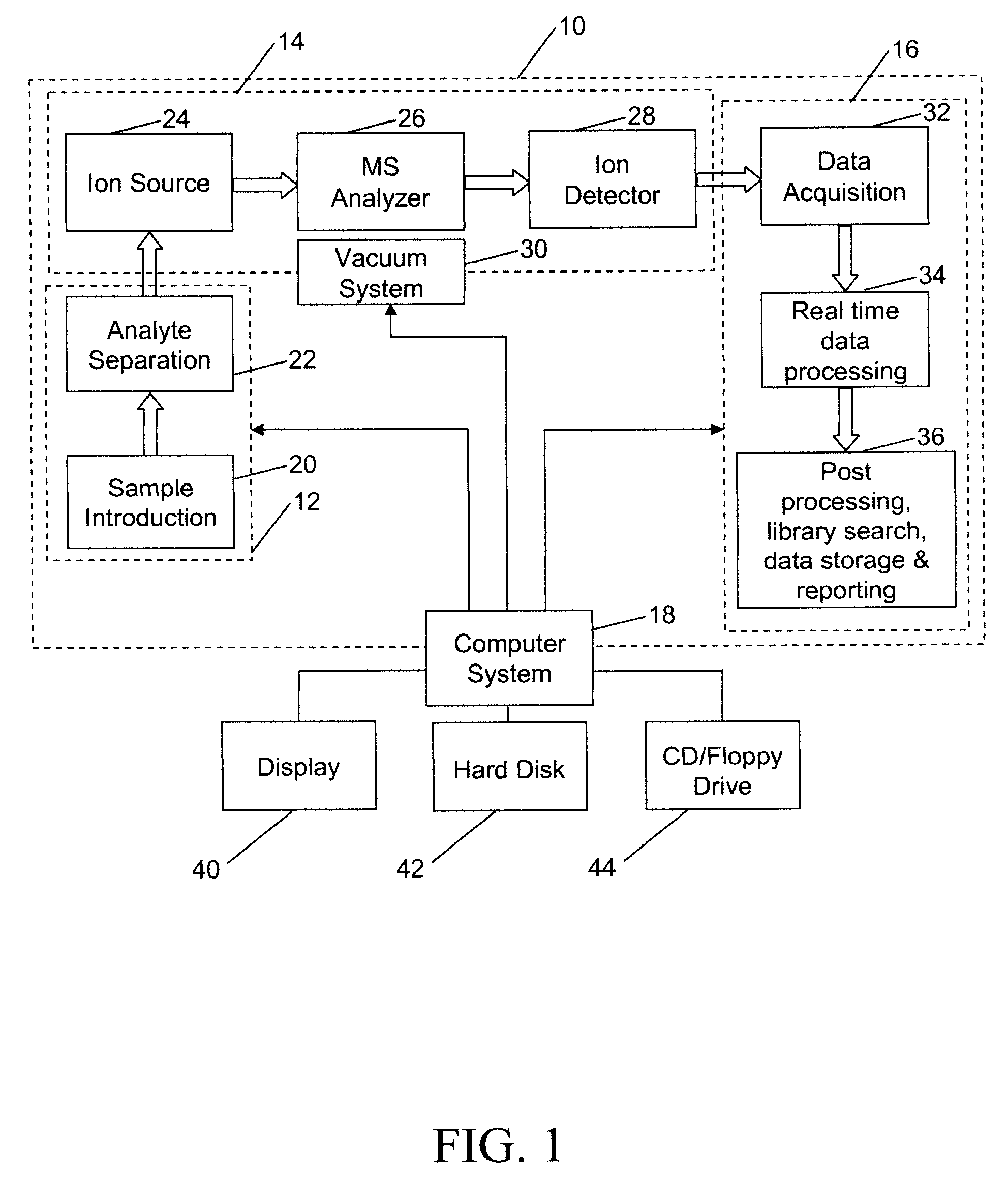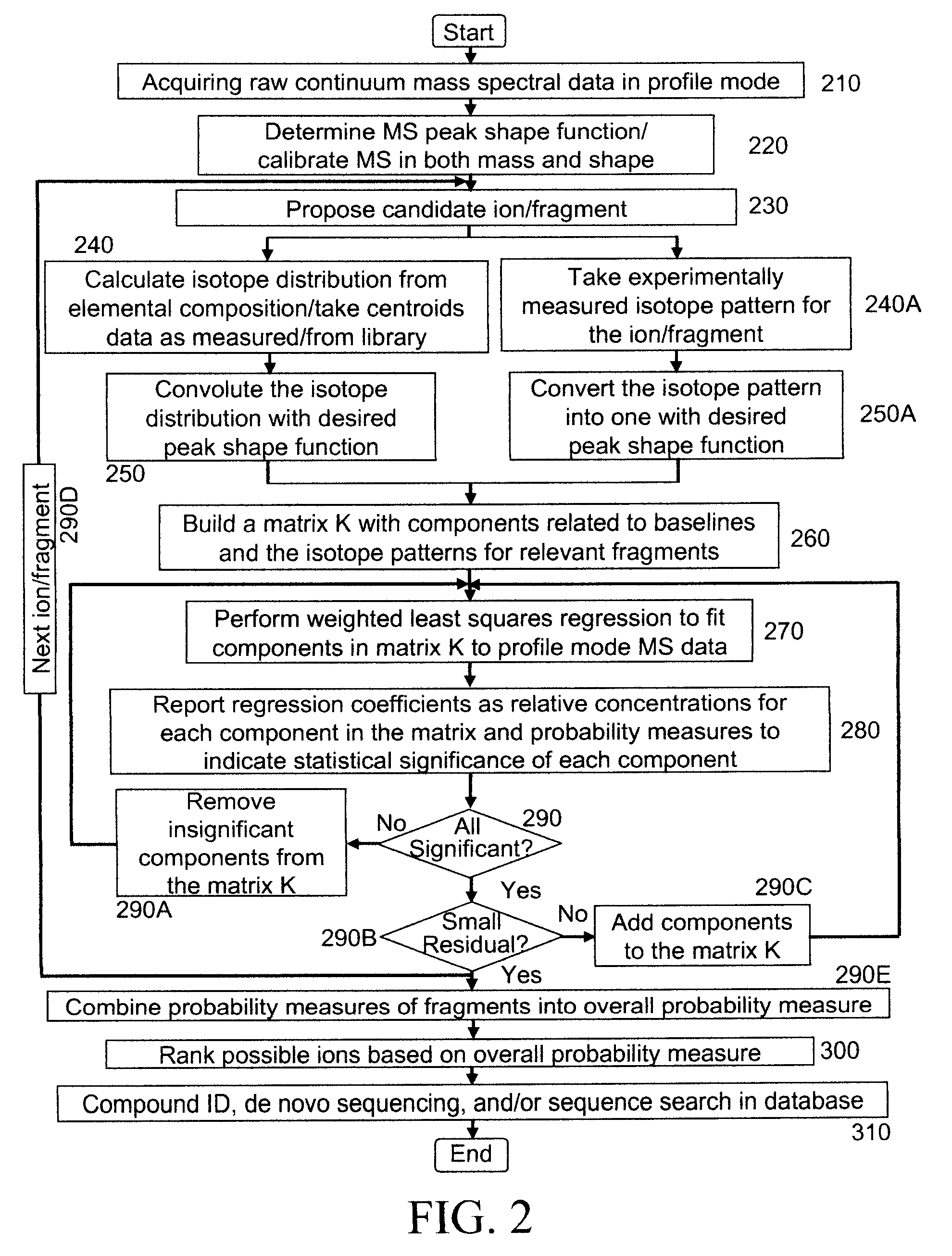Analyzing mass spectral data
a mass spectral data and analysis technology, applied in the field of mass spectral data analysis, can solve the problems of inability to achieve ms/ms capability in maldi/tof, one of the major limitations of proteomics application, and the difficulty of psd data acquisition and analysis at times, so as to achieve the effect of rich information
- Summary
- Abstract
- Description
- Claims
- Application Information
AI Technical Summary
Benefits of technology
Problems solved by technology
Method used
Image
Examples
Embodiment Construction
[0040] Referring to FIG. 1, there is shown a block diagram of an analysis system 10, that may be used to analyze proteins or other molecules, as noted above, incorporating features of the present invention. Although the present invention will be described with reference to the single embodiment shown in the drawings, it should be understood that the present invention can be embodied in many alternate forms of embodiments. In addition, any suitable types of components could be used.
[0041] Analysis system 10 has a sample preparation portion 12, a mass spectrometer portion 14, a data analysis system 16, and a computer system 18. The sample preparation portion 12 may include a sample introduction unit 20, of the type that introduces a sample containing proteins or peptides of interest to system 10, such as Finnegan LCQ Deca XP Max, manufactured by Thermo Electron Corporation of Waltham, Mass., USA. The sample preparation portion 12 may also include an analyte separation unit 22, which ...
PUM
 Login to View More
Login to View More Abstract
Description
Claims
Application Information
 Login to View More
Login to View More - R&D
- Intellectual Property
- Life Sciences
- Materials
- Tech Scout
- Unparalleled Data Quality
- Higher Quality Content
- 60% Fewer Hallucinations
Browse by: Latest US Patents, China's latest patents, Technical Efficacy Thesaurus, Application Domain, Technology Topic, Popular Technical Reports.
© 2025 PatSnap. All rights reserved.Legal|Privacy policy|Modern Slavery Act Transparency Statement|Sitemap|About US| Contact US: help@patsnap.com



